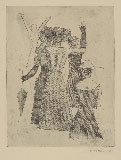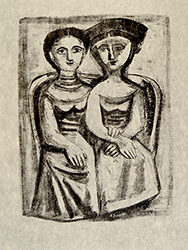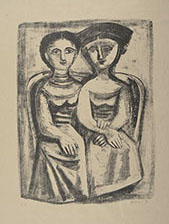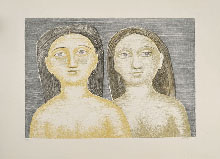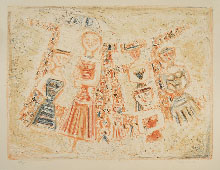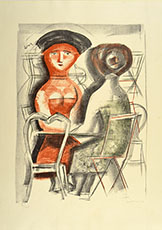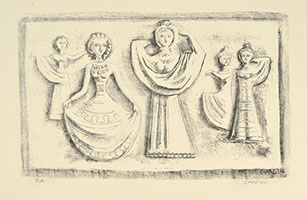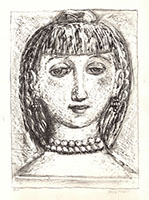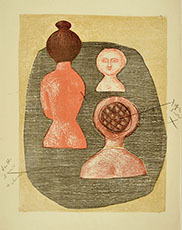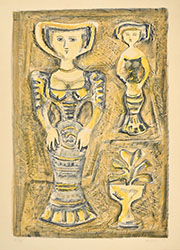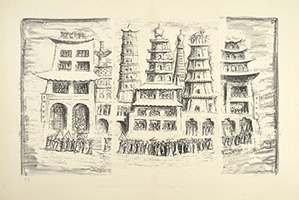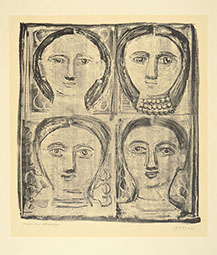(Berlin 1895 - Saint Tropez 1971)
PASSEGGIATA ROMANA, 1955
Colour lithograph (brown, ochre, green, blue and yellow), 1955; Meloni-Tavola 157. Published by L'Oeuvre Gravée, Paris-Zurich, printed by Desjobert, Paris. Edition: a few proofs, part of them signed; 175 numbered, signed and dated, on Rives paper, blind stamp of the publisher.
Our impression numbered in pencil 54/175, signed and dated CAMPIGLI 55. The verso toned, a few tears at bottom outside the printed area, blind stamp of the publisher partly trimmed. The lithographic area 440 x 580 mm.
After military service during World War I, Campigli moved to Paris in 1919. In Paris he worked for nine years as a journalist for Il Corriere della Sera, during which time he began to paint. Self-taught as a painter, he was initially drawn to Purism, Léger, the neoclassicizing works of Picasso and Metaphysical painting. Campigli also admired the preclassical works in the Louvre, but it was only in 1928, when he saw the Etruscan collection at the Villa Giulia in Rome, that he was profoundly affected by ancient art. His love of archaism and of hieratic and abstract form led him to find sources in Cretan, Pompeian and Coptic as well as Etruscan art. Campigli very rapidly won acclaim, and had exhibitions in Rome, New-York, Venice and Paris. He settled in Saint Tropez in 1949; the Palazzo Reale in Milan held a big retrospective show of his work in 1967. Campigli always showed interest in prints, mainly lithography.

